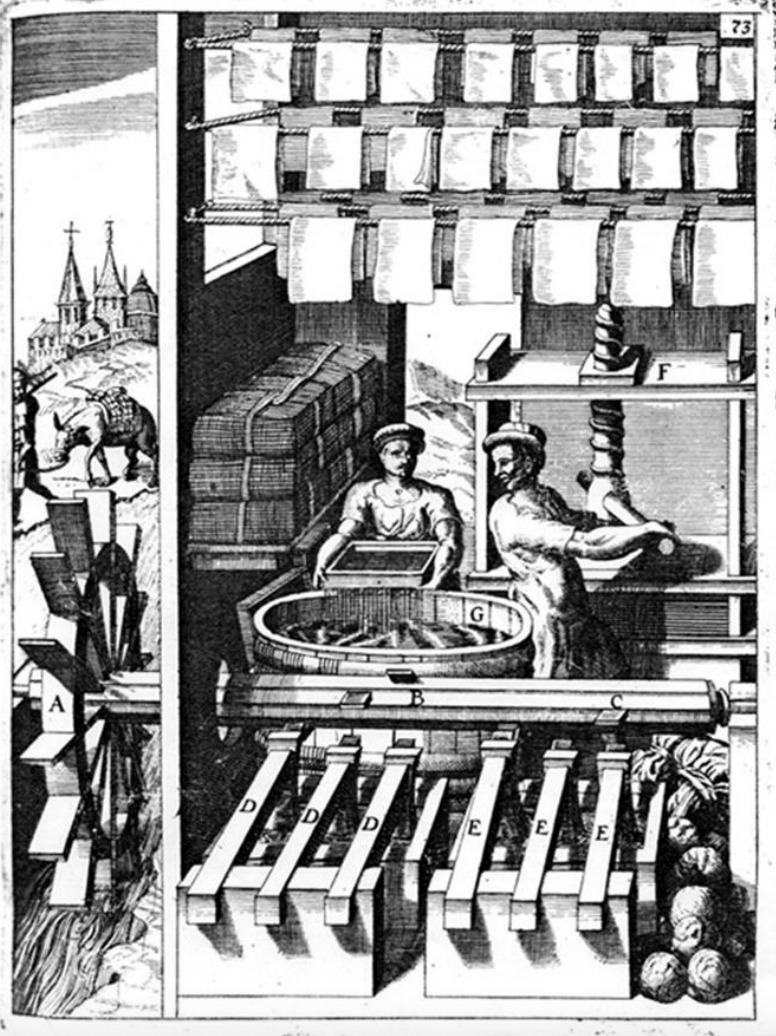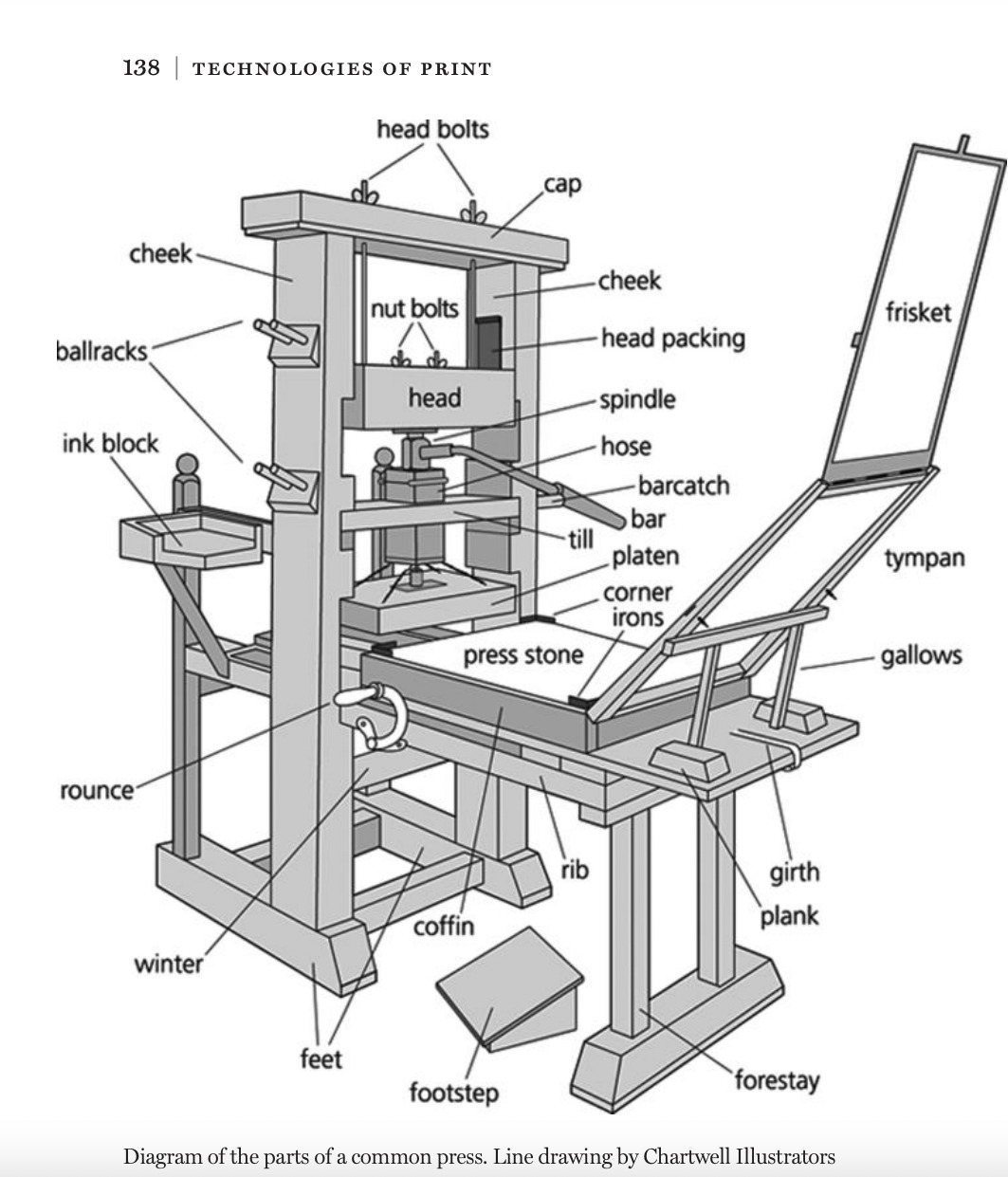Early Printing Press Era
Subject: A Sermon Preached At The Execution of Moses Paul, an Indian Samson Occom(1772).
Occom, a Mohegan tribal member and Christian preacher, penned his autobiography, and composed numerous hymns (Mulford, 867).
The Mechanics of the Early Printing Press
The printing press used until the early 19th century stood about six feet tall, constructed primarily from solid oak. The carriage, a flat surface bearing the former, slid in and out on rails under the platen, a solid flat piece of wood or metal suspended from a screw. The paper was fixed on the tympan with adjustable points for precise alignment for the second impression. Inside the tympan, a cloth layer spreads the impression evenly. The frisket, a light frame covered with paper and hinged over the tympan, held the paper in place and protected unprinted areas from ink. Two operators worked the press: the puller placed the paper, moved the carriage, and pulled the bar, while the beater prepared and applied the ink. This setup, consisting of one press, a frame, and a case of type, was standard in printing offices during the hand press period (Suárez, 137-138).
Benjamin Franklin Establishing Printing Mediums and Book Importer
Benjamin Franklin was one of the most prominent publishers in America between the 1750s and 1760s. He frequently produced books and pamphlets for individuals and organizations. Franklin contributed to the establishment of printing offices throughout the colonies. He also initiated paper mills, including the first in Virginia, to secure the supply for the printing of that time. These paper mills were pivotal in the production of books in the pre-modern printing press era, such as Occom’s. By the 1750s, Franklin had become the colonies' the leading book importer and seller in Philadelphia, significantly influencing the production and distribution of printed materials during this time (Suárez, 686).
Circulation of Native American Books During this Era, Especially Occom’s:
During this era, books and print media such as Occom’s, circulated within Native American communities through well-established indigenous communication networks.
These hubs intertwined print culture with colonial policy while also maintaining traditional non-state spaces where written exchanges occurred, such as council grounds, Native cabins, and slave quarters. (Round, Phillip H, 1000). This context shows how Occom’s book was part of a broader print culture that combined indigenous practices with colonial influences.
Interestingly, it reveals the existence of transcultural mixing of literature during this time between the Natives, enslaved peoples from Africa and the Europeans. This aligns with Equiano’s narrative as in The Interesting Narrative of the Life of Olaudah Equiano, he references a text written by Samson Occom, titled A Choice Collection of Hymns and Spiritual Songs, which Occom compiled. This reference highlights the interconnectedness of different marginalized groups and their literary contributions during the colonial period.
The English book trade provided a crucial means for Native American communities to navigate the challenges of their world. While works like Occam's sermon originated and circulated in colonial and urban centers, their dissemination involved unique social practices. These practices highlighted the differences between the mainstream metropolitan book trade and the diverse, interethnic networks of the colonies (Round, Phillip H, 1002).
This highlights how the distinctive pathways through which Native texts were created and distributed came from a blend of indigenous and colonial influences in the print culture of the early printing press era.


